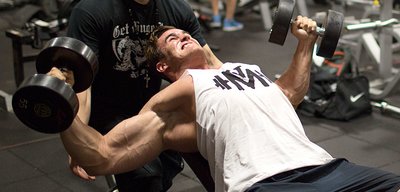If you're like most guys, you never shortchange chest day. That applies to volume, frequency, and intensity-boosting techniques like forced reps and dropsets. And you're always up for trying a new exercise to squeeze out those incremental gains.
But just because working hard on your chest is part of your DNA doesn't mean you're training it as effectively as you could be. I've identified nine essential chest-day training tips that are considerably underrated. Heck, if you're going to spend that much effort on building your chest, you might as well leave no stone unturned.
1. Get Off The Damned Barbell Bench Press
We're not here to discuss the efficacy of the bench press for building up your pecs. But if you're like a lot of people and always start your chest-training session on the bench, you probably hit a plateau in your training long ago. That's because the value of an exercise decreases over time, a concept called diminishing returns. It can happen with any movement you do in your workout unless you start making changes.
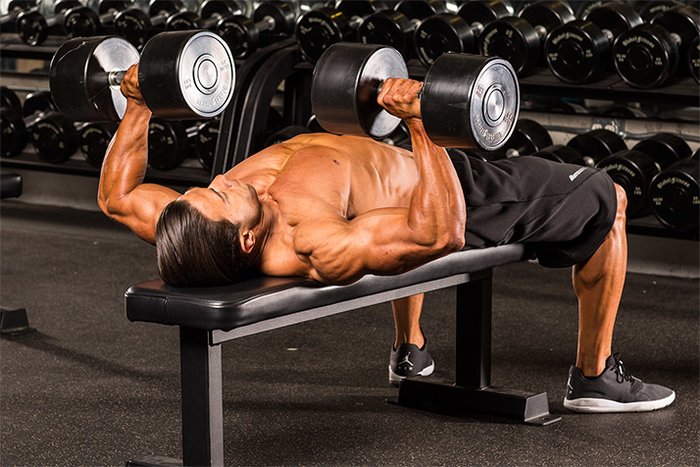
There are several ways to introduce variety into your training that will provide just enough change to keep you growing. The most obvious option is using dumbbells.
There are several ways to introduce variety into your training that will provide just enough change to keep you growing. The most obvious option is using dumbbells. Not only does that enable you to work each side separately, you can work your pecs through a longer range of motion. That variation is also kinder to your shoulders over the long haul.
Another option is to occasionally do flat benches later in your workout session. This will result in greater energy levels—and the ability to push more weight—with whatever movement comes first. So if your upper chest is lagging, instead of pushing your incline presses with 225 pounds, you might be able to do 255 when you do them first. That's a nifty muscle-building stimulus to those upper-pec fibers that have long been worked at less intense levels.
Keep in mind that when you do flat benches later in your workout, your strength levels will be somewhat compromised. Don't expect to be putting up the same amount of weight for the same number of reps. Here's where machine training can help too, so you're not having to balance the weight.
2. Multiply Your Bench Angles
Most lifters limit their thinking to incline/decline/flat when it comes to benches on chest day. The same principle of diminishing returns can occur with the incline and decline benches, not just the flat one. But it doesn't have to be that way.
Take a look at the adjustable bench and the adjustable decline bench. Both can be used with dumbbells (presses or flyes) or with Smith-machine training. While you probably have a preferred position for your benches, one you automatically adjust them to, note that there are a number of intermediate positions you could be using as well.
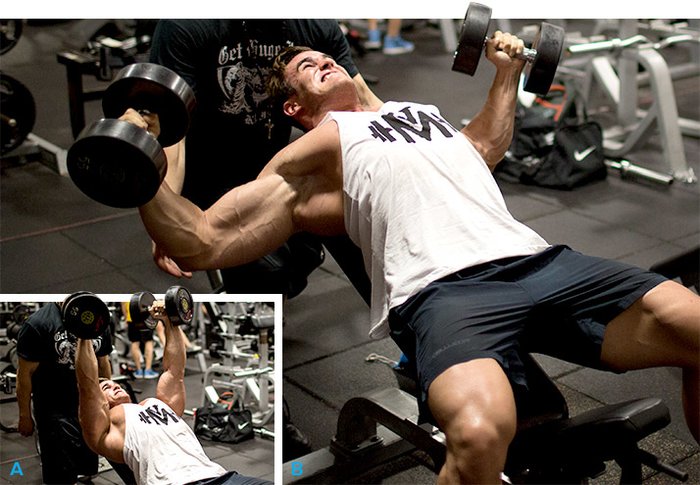
Dumbbell Flyes
For example, you could set your incline to a low position, a moderate one, or very steep. Each of those adjustments slightly changes how the chest musculature is recruited, both in the contribution from the front delts and from the upper region of the pecs. Similarly, you can dial up slight variations in how declines are performed just by repositioning the bench.
To maximize the chest growth, don't limit yourself to just the three bench angles. Achieve more complete muscular development by exploring the various angles in between.
3. Stop Pressing Your Flyes
Single-joint moves like flyes and cable cross-overs are typically done at the end of a training session. On these moves, your elbows should be locked in a slightly bent position throughout. As a result, you won't be able to use as much weight as you can with presses.
Perhaps in the name of trying to push more weight with their single-joint moves, some trainees mistakenly load up more weight than they can reasonably handle. As a result, their form breaks down. While in this case that doesn't mean you're at greater risk of injury, the semi-press/fly movement reduces the degree of isolation.
You see it most often with cable cross-overs. Here's how to tell if you're doing it: Watch the degree of bend in your elbows over the course of the range of motion. What you're supposed to be doing is locking a slight bend in your elbows and maintaining it for the entire set. What's happening instead is your elbows are closing up—a sign that you're pressing the weight—and then opening toward the top.

Watch the degree of bend in your elbows over the course of the range of motion. What you're supposed to be doing is locking a slight bend in your elbows and maintaining it for the entire set. What's happening instead is your elbows are closing up—a sign that you're pressing the weight—and then opening toward the top.
Again, there's nothing wrong with doing presses, but cables aren't a good place to be pressing a weight, because your body isn't stabilized against a bench from which to strongly push. (Besides, we assume that, at this point in your workout, you've already done all your presses.) So drop the weight to one that allows you to maintain your form for the duration of the set, and keep an eye on your elbows!
If you're still having trouble holding (locking) the slight bend in your elbows as you perform flyes or cross-overs, jump on the pec-deck machine, which more effectively holds your arms in position. This makes it damned near impossible to extend your elbows during the positive contraction.
4. Improve Your Front-Delt Strength
If you're looking to build bigger pecs, one place to check is your delts, specifically the front heads. That's because they're called upon during chest presses, especially incline movements. And if they're a weak link in the chain, you can bet they're holding back your chest gains.
That means addressing your shoulder workout. Consider doing overhead shoulder presses that are more front-delt oriented. Arnold presses and barbell presses, in which you bring the bar in front of your head, are good examples. Also, place single-joint front-delt moves first in your rotation of single-joint moves, perhaps even doubling up with another single-joint move.
This means also addressing where to position your shoulder workouts in your split. Ideally, space your chest and delt workouts at least two days apart. This should build in a recovery period so that the muscle groups are not being worked on back-to-back days. If you train them on the same day, it's generally best to start with the larger muscle group—in this case chest.
However, if your front delts truly are a weak link, consider doing your shoulders first, at least occasionally.
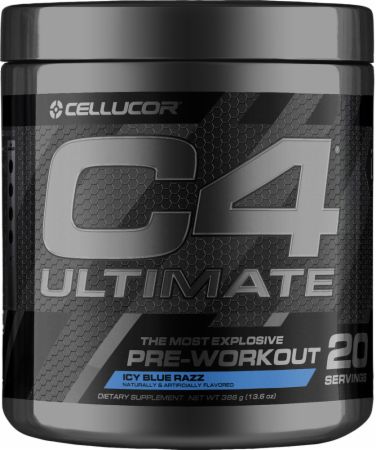
5. Make Sure Your Triceps Are Strong
Front delts might not be the only muscle group holding back your chest gains. Triceps can also be a rate-limiting factor. That's because your elbows are extending in every kind of multijoint press you do. The triceps aren't just along for the ride—they're a primary mover! Which means, of course, that if they're weak by comparison, every variation of the bench press you do is going to suffer.
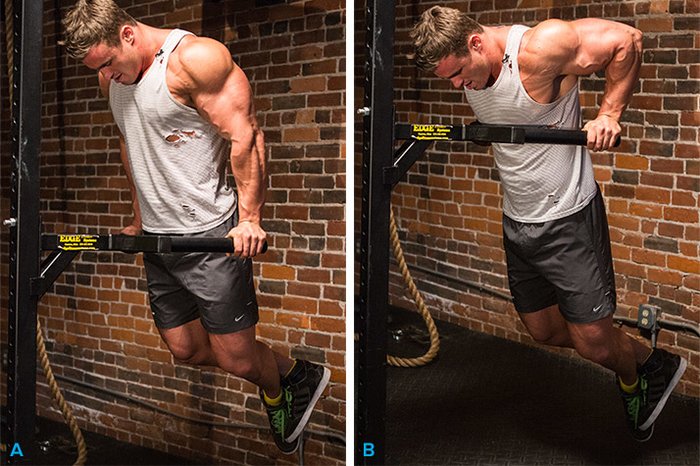
The Rx for weak triceps is heavy-duty arm work, especially multijoint exercises (dips, machine dips, close-grip bench presses) for low-to-moderate reps.
The Rx for weak triceps is heavy-duty arm work, especially multijoint exercises (dips, machine dips, close-grip bench presses) for low-to-moderate reps. You might even consider doubling up your triceps work over the course of your split. Just don't do that arm work the day before you train chest—or worse, immediately before your chest session.
6. Don't Neglect Your Backside
Why talk about training back in a chest-training piece? If your chest improves but your back lags, the imbalance can affect your posture and pull your shoulders forward, giving you a slouched appearance.
That's not a look that says, "I've got a jacked build!" Get serious about training for balance in your physique—and balance means addressing all of the major muscle groups, even those you can't see in the mirror.
7. Take Your Presses All The Way Down And Up
Ever seen an individual pressing a bar to full extension, only to lower it halfway down? Or someone who stops well short of the top position? What gives?
Limiting the range of motion on a movement limits your growth. If you're always shortchanging the bottom part of the rep, you never build up strength over that portion of the movement. You then start limiting the movement simply because you find you can handle more weight over the reduced rep range, and nobody wants to put less weight on the bar.
Bottom line: Do partial-rep training as an adjunct to full-range training, not instead of it—especially when training for maximum muscle size.
8. Retract Your Shoulders Blades
Often, you don't think much about what your shoulder blades are doing when training chest. You simply lower the bar to your chest and press it back up.
But it's a bit of an understatement to say you're simply lowering your arms behind the plane of your torso when going into the stretch phase. Rather, you're retracting your shoulder blades as you complete the negative rep, swelling your chest out like a barrel. This may overexaggerate the curve in your thoracic spine, but remember, you're stabilized on a bench when doing pressing movements.
This superior stretch enables you to better generate force through your pecs while stabilizing and protecting your shoulders.
9. Change Your Grip On Barbell Benches
Rather than taking a standard grip on a barbell, consider repositioning your hands, ranging from very close to very wide. With your hands fairly close together, your inner pecs get worked to a greater degree, the range of motion is the longest, and your triceps are heavily called into play. Pushing your hands way out, on the other hand, moves the target to the outer portion of the pecs as well as the shoulders, while the range of motion is highly restricted.
I'm not suggesting you use either extreme: I'm just pointing out that there are a number of hand positions slightly different from what you're probably doing now. Each position recruits the musculature in a slightly different way. Consider occasionally working with a slightly closer or wider grip on the bar. It's a great way to boost your overall chest development.

